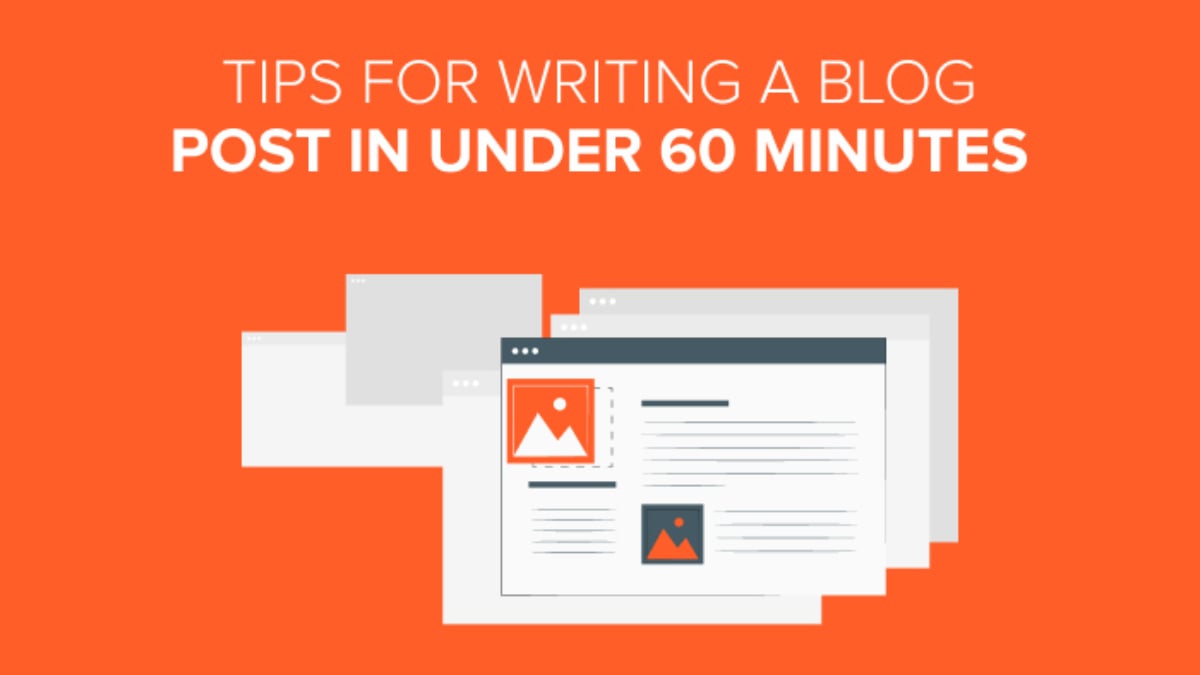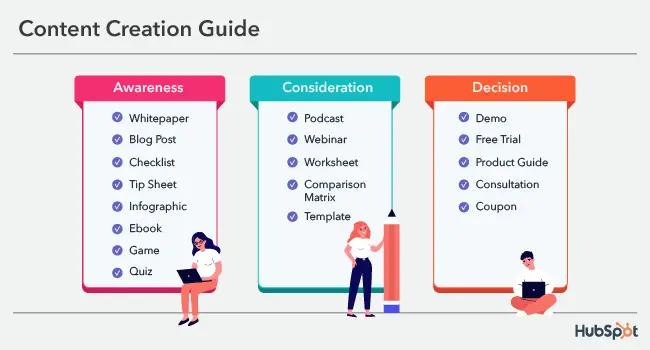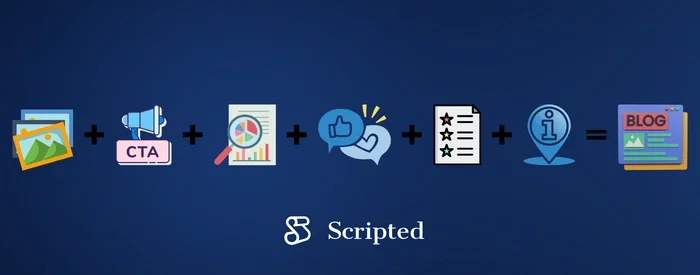So, you’ve started a blog and now you’re wondering how to create truly compelling and high-quality content? Well, you’re in luck! In this article, we’re going to explore some practical tips and strategies that will help you craft engaging blog posts that will captivate your readers and keep them coming back for more. From finding your unique voice to conducting thorough research, we’ve got you covered. So, let’s get started on your journey to become a content creator extraordinaire!

This image is property of www.searchenginejournal.com.
Finding Your Blog’s Niche
Researching popular blog topics
When it comes to starting a blog, one of the first steps is to determine the niche or topic that you want to focus on. Researching popular blog topics is a great way to get inspiration and insights into what topics are currently trending and in demand. By exploring different blog niches, you can identify areas that resonate with you and align with your interests and expertise.
Identifying your personal interests and expertise
While researching popular blog topics can give you a good starting point, it’s also important to consider your personal interests and expertise. Your blog should be a reflection of yourself and something that you are genuinely passionate about. By identifying your personal interests and expertise, you can create content that is authentic, engaging, and valuable to your audience.
Analyzing your target audience
Understanding your target audience is crucial for creating content that resonates with them. Take the time to research and analyze your target audience demographics, interests, and preferences. This will help you tailor your content to their needs and interests, ensuring that it is relevant and valuable to them.
Understanding and Meeting Audience Needs
Researching current trends and topics in your niche
To create content that is relevant and up-to-date, it’s important to stay informed about the latest trends and topics in your niche. Keep an eye on industry news, follow other popular blogs in your niche, and subscribe to relevant newsletters and publications. By staying in the loop, you can ensure that your content remains fresh and timely.
Conducting keyword research for SEO optimization
Keyword research is an essential part of optimizing your content for search engines. By identifying relevant keywords and incorporating them naturally into your content, you can improve your blog’s visibility in search engine results. Tools like Google Keyword Planner and SEMrush can help you find the right keywords to target.
Analyzing audience feedback and comments
Pay attention to your audience’s feedback and comments to understand their needs and preferences better. Engage with your audience through comments, surveys, and social media interactions. This will not only provide valuable insights but also foster a sense of community and connection with your readers.

This image is property of neilpatel.com.
Planning Your Content Strategy
Setting clear goals and objectives for your blog
Before diving into creating content, it’s important to establish clear goals and objectives for your blog. What do you want to achieve with your blog? Whether it’s to educate, inspire, entertain, or drive traffic to your website, having a clear direction will guide your content creation process and help you stay focused.
Creating an editorial calendar
An editorial calendar is an essential tool for planning and organizing your content. It allows you to map out your content ideas, schedule posts in advance, and ensure a consistent publishing schedule. By having a structured plan, you can avoid last-minute scrambling and ensure that your content is well-thought-out and cohesive.
Organizing content into categories and series
Organizing your content into categories and series can help you provide a structured and organized experience for your readers. By grouping related content together, you make it easier for your audience to navigate and find the information they are looking for. This can also encourage readers to explore more of your content.
Writing Engaging and Valuable Content
Crafting catchy and compelling headlines
The headline is the first thing that grabs your readers’ attention, so it’s important to make it catchy and compelling. A good headline should be attention-grabbing, evoke curiosity, and clearly communicate what the content is about. Spend time brainstorming and experimenting with different headline ideas to find the one that resonates best with your target audience.
Using storytelling techniques
Storytelling is a powerful tool for engaging your audience and making your content more relatable. Weave narratives into your blog posts to make them more compelling and memorable. Use personal anecdotes, case studies, or examples to illustrate your points and evoke emotions in your readers.
Including relevant examples and anecdotes
Including relevant examples and anecdotes can help bring your content to life and make it more relatable. Whether it’s a personal experience, a success story, or a real-life example, providing concrete examples can make your content more valuable and practical for your readers.

This image is property of neilpatel.com.
Ensuring High-Quality Writing
Proofreading and editing for grammar and spelling errors
To ensure high-quality writing, it’s essential to proofread and edit your content for grammar and spelling errors. Typos and grammatical mistakes can undermine your credibility as a blogger. Take the time to review and revise your content before publishing it, or consider working with a professional editor to ensure it is error-free.
Using proper formatting and structure
Proper formatting and structure are essential for readability and user experience. Use headings, subheadings, paragraphs, bullet points, and numbered lists to break up your content and make it easier to digest. This not only improves readability but also enhances the overall organization and flow of your blog posts.
Ensuring consistency in tone and voice
Consistency in tone and voice is crucial for establishing your brand and connecting with your audience. Decide on the tone and voice that best represents your brand and stick to it throughout your content. Whether it’s conversational, formal, friendly, or authoritative, consistency will help you build a loyal audience who resonates with your style.
Incorporating Visual Elements
Using high-quality images and graphics
Visual elements, such as images and graphics, can enhance the visual appeal of your blog and make your content more engaging. Use high-quality and relevant images that support your content and captivate your audience’s attention. Be sure to use images that you have the rights to or find suitable images from royalty-free sources.
Creating custom visuals and infographics
Custom visuals and infographics can be powerful tools for presenting complex information in a visually appealing and easy-to-understand way. They can help break down complex concepts, summarize key points, and make your content more shareable. Tools like Canva and Piktochart can help you create custom visuals even if you’re not a design expert.
Optimizing images for faster loading times
Optimizing your images for faster loading times is crucial for a smooth user experience. Compress your image files, choose an appropriate file format (such as JPEG or PNG), and use lazy loading techniques to ensure that your images are optimized for quick loading across different devices and internet speeds.
This image is property of cdn.buttercms.com.
Including Interactive Elements
Adding videos and multimedia content
Adding videos and multimedia content can enhance the interactivity and engagement of your blog posts. Consider incorporating videos, slideshows, or audio clips to provide additional value and appeal to different learning styles. Ensure that any multimedia content you use is relevant and enhances the overall message of your blog post.
Embedding interactive quizzes or surveys
Embedding interactive quizzes or surveys can encourage active participation from your readers and provide valuable insights. Use tools like Typeform or Google Forms to create quizzes or surveys that relate to your blog topics. This not only boosts engagement but also helps you collect feedback and understand your audience’s preferences better.
Encouraging comments and discussion
Encouraging comments and discussion on your blog posts can foster a sense of community and enhance reader engagement. Ask questions at the end of your blog posts to prompt reader responses, and actively respond to comments to encourage further discussion. This creates a two-way conversation and establishes a deeper connection with your audience.
Utilizing SEO Techniques
Including relevant keywords throughout the content
Including relevant keywords throughout your content is essential for optimizing your blog posts for search engines. Conduct keyword research to identify the keywords that are relevant to your content and incorporate them naturally into your blog posts. However, be sure to prioritize readability and user experience over keyword stuffing.
Optimizing meta tags and descriptions
Optimizing your meta tags and descriptions is important for improving your blog’s visibility in search engine results pages. Craft compelling and concise meta titles and descriptions that accurately describe your content and entice readers to click through. Use relevant keywords in your meta tags to improve your blog’s SEO performance.
Creating internal and external links
Creating internal and external links within your blog posts can boost your blog’s SEO and provide additional value to your readers. Internal links help to establish a logical and organized site structure and guide readers to related content. External links to authoritative and relevant sources can enhance your credibility and provide additional resources for your readers.

This image is property of blog.hubspot.com.
Promoting and Sharing Your Content
Leveraging social media platforms
Promoting your content on social media platforms is essential for reaching a wider audience and driving traffic to your blog. Identify the social media platforms that are most relevant to your target audience and develop a strategic social media marketing plan. Share your blog posts, engage with your followers, and leverage social media advertising to extend your reach.
Collaborating with other bloggers and influencers
Collaborating with other bloggers and influencers in your niche can help you expand your reach and tap into their existing audience. Look for opportunities to guest post on other reputable blogs, participate in blogger collaborations or interviews, or co-create content with influencers. These collaborations can not only drive traffic but also enhance your credibility and authority.
Guest posting on other reputable blogs
Guest posting on other reputable blogs is an effective way to amplify your message and reach a broader audience. Identify blogs in your niche that accept guest posts and pitch them with compelling and relevant topics. Guest posting helps you gain exposure, build backlinks to your blog, and establish yourself as an expert in your field.
Analyzing and Improving Performance
Tracking website traffic and engagement metrics
Tracking website traffic and engagement metrics is crucial for understanding how your audience interacts with your blog. Use tools like Google Analytics to track metrics such as page views, time spent on page, bounce rate, and conversion rate. Analyzing these metrics can help you identify trends, strengths, and areas for improvement.
Using analytics tools to understand audience behavior
Analytics tools provide insights into your audience’s behavior and preferences. Dive deep into your analytics to understand which blog posts perform well, which topics resonate most with your audience, and what type of content drives the most engagement. Use this data to inform your content strategy and focus on creating content that aligns with your audience’s interests.
Making data-driven decisions to enhance content
Data-driven decisions can lead to continuous improvement and growth. Based on the insights gained from your analytics, make informed decisions about your content strategy. Double down on topics that perform well, experiment with new content formats, or adjust your posting frequency. By analyzing data and making data-driven decisions, you can ensure that your content is continuously evolving to meet your audience’s needs.
In conclusion, creating quality content for your blog requires careful planning, research, and consideration of your target audience’s needs and preferences. By finding your blog’s niche, understanding your audience, planning your content strategy, writing engaging content, ensuring high-quality writing, incorporating visual and interactive elements, utilizing SEO techniques, promoting and sharing your content, and analyzing and improving performance, you can create a blog that stands out and resonates with your readers. Remember to always prioritize providing value and solving problems for your audience, and you’ll be on your way to creating a successful and impactful blog.



